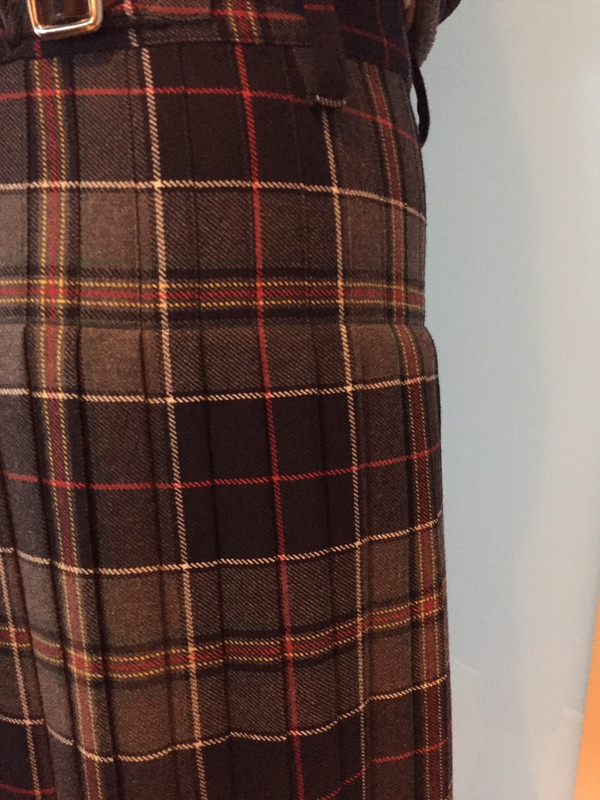|
-
16th February 20, 11:45 AM
#1
This sounds like something a good taylor could do if a person is not handy with a needle and thread. It also explains why my off the rack kilts lie fine on me. I have almost no derriere, so if it is cut flat, it lies flat on me!
Dave
 Originally Posted by Pleater

I think this is the same problem I have - or would have if I did not work it out as I am making my kilts.
It is simply due to using a flat fabric to wrap a curved shape.
I think I can see not only the edge pushing out but the apron distorting at about level with the lower edge of the fell stitching.
Try making a small horizontal fold on the inside edge of the pleat, making it only about a centimetre shorter, or maybe even less, fairly high up.
I can't show you an example of this as I hide it in the waistline, but if it works to pull in the pleat and straighten the apron then - because wool is malleable you can make a couple of rows of stitches close to that inner fold and tighten them to draw it up shorter. Press the shortened fold just enough to flatten it and all should be well. If the stitches start as high up as can be reached easily, and head down towards the selvage you should be able to tighten and secure the thread temporarily, try on to see if it is shortened enough then sew a bit more and tighten again. Pull on the thread lightly, it isn't gathering up but gently persuading to be shorter.
-
-
18th February 20, 06:13 PM
#2
The other culprit can be not making the kilt big enough around at the hips. If you measure waist and hips, and use those measurements directly, you're in trouble if the person has a belly. In the kilt below, you'll see that the kilt is only big enough to go around the person snugly at both waist and hip. That means the kilt will be kind of a tilted cylinder, with the pleats on an angle instead of hanging straight down. The first pleat flops open under the influence of gravity.

Here's the same guy in a kilt where the kiltmaker added a few inches to the hip measurement, and then split the apron and pleats at the hips evenly. The kilt now hangs straight down in the front, no flopping first pleat. I've made kilts where I've had to add 5" or more to the hip measurement to have the kilt hang properly. Note - this is a case where sporran hangers are the best solution (a sporran strap would pull the kilt in under the belly and ruin the nice straight hang).

Many large guys also have a bigger waist than hip measurement, so adding inches at the hips to achieve a straight hang in the apron ALSO allows you to shape the back of the kilt to snug it into the small of the back. This not only helps the kilt hang better in the back, but it also prevents the kilt from slipping south, even on a guy with a relatively flat butt (because even when a guy THINKS he as no butt, he really does have something there).
Last edited by Barb T; 18th February 20 at 06:18 PM.
-
The Following 2 Users say 'Aye' to Barb T For This Useful Post:
-
18th February 20, 11:25 PM
#3
On the issue that Barb brings up, I know of one kiltmaker who started learning in my shop and was taught my system but never did catch on to the idea of ease. He is now off on his own but still makes the rear hip split exactly what he measures leaving no ease in the back.

The causes the bottom of the Fell, at the steeking line, to pull in. This then causes every kilt he makes have the left and right apron edges, gape open.

Notice that even pressing and steaming the apron edge to curl inward, that there is still a gape at the first pleat.
Now, while this is different than the issue of the apron edge flipping outward it is still an illustration that kilt making is just a bit more complex than most people's first impression.
Last edited by Steve Ashton; 18th February 20 at 11:30 PM.
-
The Following 3 Users say 'Aye' to Steve Ashton For This Useful Post:
Tags for this Thread
 Posting Permissions
Posting Permissions
- You may not post new threads
- You may not post replies
- You may not post attachments
- You may not edit your posts
-
Forum Rules
|
|
Bookmarks